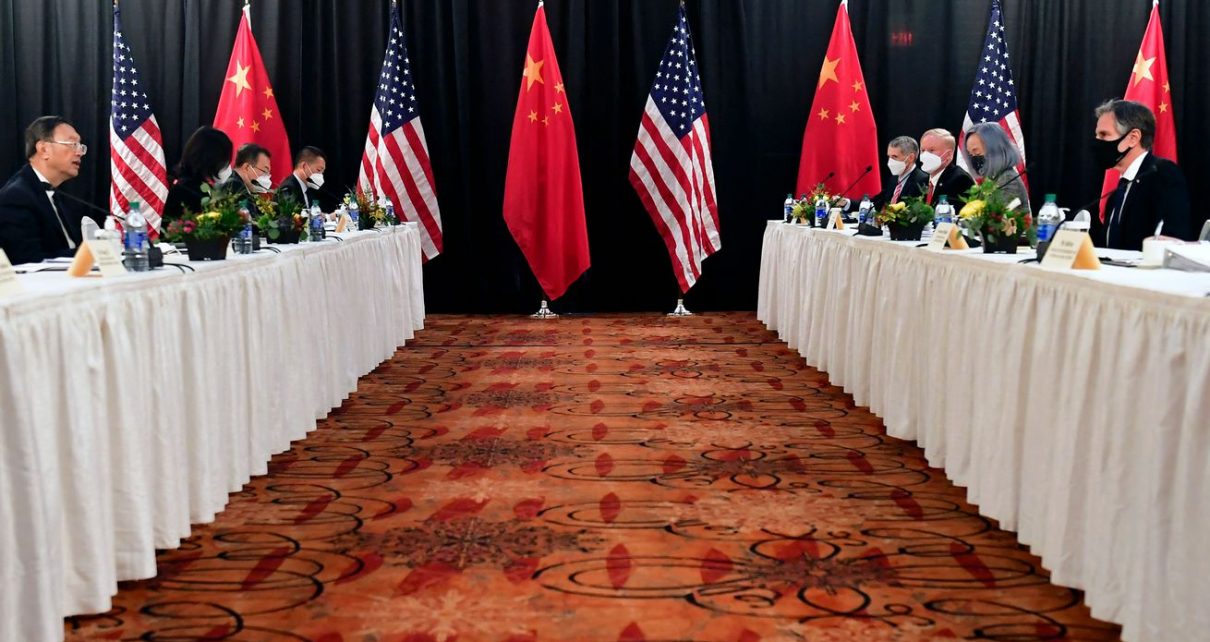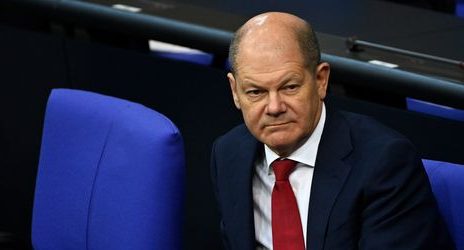
The US-China meeting was going to be tense. Few expected it to be that combustible.
The first meeting during the new administration between US and Chinese officials was always going to be a tense affair. But few predicted it would be as combustible as it turned out to be.
Secretary of State Tony Blinken and national security adviser Jake Sullivan met Thursday in Anchorage, Alaska, with Yang Jiechi, China’s top diplomat, and Foreign Minister Wang Yi for a one-off discussion about the state of Washington-Beijing relations. Senior Biden administration officials previewed the meeting as a chance for the US to detail “our interests, intentions, and priorities, and frankly, to get a bit of an understanding of where the Chinese are at.”
That was necessary, they said, after years of trade war, human rights disputes, cyberhacks, and threats on allies like Australia and Taiwan.
But even uncomfortable diplomatic encounters are stiffly staged, and the expectation was the vibe inside the Alaskan hotel room would be chilly but decorous. Instead, it got hot and rancorous.
Blinken used his two-minute opening remarks in front of cameras to blast China for not following global rules and norms. That behavior was unacceptable, he said, because it creates “a world in which might makes right and winners take all, and that would be a far more violent and unstable world for all of us.”
Yang didn’t stick to the agreed-upon two-minute prelude. Instead, he listed a series of anti-US gripes for 18 minutes. He said that few Americans have confidence in US democracy, that Black Lives Matter underscored the “many problems within the United States regarding human rights,” that Washington was the “champion” of cyberattacks, and that Biden’s team shouldn’t concern itself with China’s internal affairs.
The U.S. and China leveled sharp rebukes of each others’ policies in the first high-level, in-person talks of the Biden administration, with deeply strained relations of the two global rivals on rare public display in Alaska https://t.co/cl3SoVXQmE pic.twitter.com/JAJxufB674
— Reuters (@Reuters) March 19, 2021
Again, that’s simply not how pro forma comments usually go ahead of diplomatic talks, especially in front of the press. That’s why the American delegation told the attendant media to stay in the room as Blinken offered an impromptu rebuttal to Yang’s lecture on democracy and human rights in the US. Yang’s comments were rich, after all, since China is an autocratic state that has forcibly imprisoned around 2 million Uyghur Muslims in concentration camps.
Instead of pressing on those points, Blinken riffed on the virtues of American society. It’s worth reading his remarks in full:
[T]here’s one more hallmark of our leadership here at home, and that’s a constant quest to, as we say, form a more perfect union. And that quest, by definition, acknowledges our imperfections, acknowledges that we’re not perfect, we make mistakes, we have reversals, we take steps back.
But what we’ve done throughout our history is to confront those challenges openly, publicly, transparently, not trying to ignore them, not trying to pretend they don’t exist, not trying to sweep them under a rug. And sometimes it’s painful, sometimes it’s ugly, but each and every time, we have come out stronger, better, more united as a country.
Yang didn’t take kindly to that implicit criticism of China’s system. After telling the press to “wait” once more, he remarked: “Well, it was my bad. When I entered this room, I should have reminded the US side of paying attention to its tone in our respective opening remarks, but I didn’t.”
After about an hour, the cameras finally left the meeting space and both sides had a “substantive, serious, and direct” conversation behind closed doors, a senior administration official told reporters.
Even so, the damage was done.
Why the heated US-China exchange in Anchorage matters
It’s hard to overstate just how tense that hour was, leading China experts like the Center for Strategic and International Studies’ Bonnie Glaser to label the event’s opening a “rough start.”
While the optics remain a key takeaway, experts pointed out two others that highlight why the Anchorage meeting started as poorly as it did.
Eric Sayers, an expert on US-China relations at the American Enterprise Institute, noted that the Biden administration’s goal in this meeting was to let Beijing know what it could and could not accept. By default that was going to make for a rocky encounter.
“This was always about the Biden team setting a new baseline,” Sayers tweeted on Thursday night. “Raising a range of concerns. Dispelling hope there would be a reset. Wasn’t a way to make it pretty. But had to happen, in person.”
The other thing to notice is that the Chinese government did away with the niceties to excoriate the Biden administration openly. For Elbridge Colby, a top Pentagon strategist from 2017 to 2018, that signals Beijing has few qualms about pushing back on the US.
The “[b]iggest takeaway of Anchorage meeting isn’t the debating points,” he tweeted on Friday morning. “Its [sic] China’s confidence & assertiveness. They know they’re very strong.” Chinese diplomats have made pretty combative statements before but making them in front of top US officials is a whole other level.
All of this could be grandstanding, of course. With the eyes of the world watching, each side wanted to look strong in front of their respective audiences and demonstrate they meant business. It seems like tensions died down and the officials got down to serious work with the cameras off them, as the senior Biden official implied.
But the fiery exchanges also symbolize an extremely competitive and confrontational future between America and China. If both sides can’t get along in an open forum when they’re supposed to play nice, chances are it’ll only get worse when the stakes are much, much higher.




